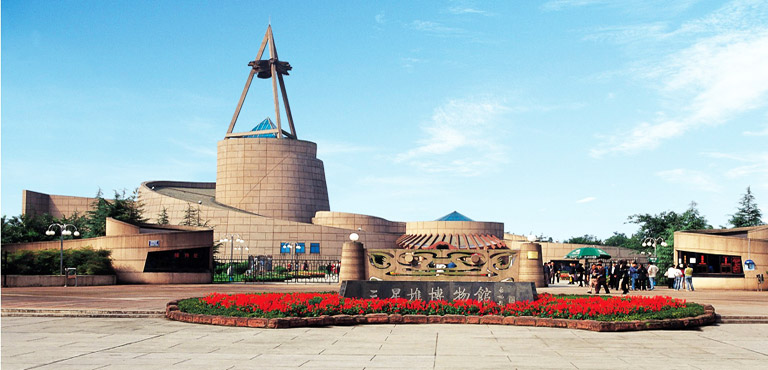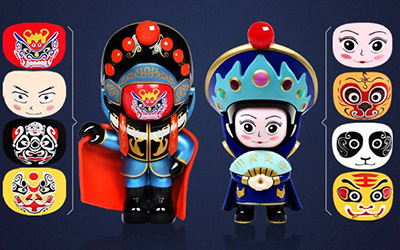
You can find more information about Chengdu Travel Guide: Location, Tips, Map, Attractions Chengdu via the following link: https://www.travelchinaguide.com/cityguides/chengdu.htm
Chengdu, the capital of China's southwest Sichuan Province, is famed for being the home of cute giant pandas. Located in the west of Sichuan Basin and in the center of Chengdu Plain, the city covers a total area of 12.3 thousand square kilometres (4,749 square miles) with a population of over 11 million.
Benefiting from Dujiangyan Irrigation Project which was constructed in 256 B.C., Sichuan Province is reputed as the Heavenly State, Tian Fu Zhi Guo in Chinese, literally a place richly endowed with natural resources. Chengdu, as the capital, is extremely productive. The Min and Tuo Rivers, two branches of the Yangtze River, connected to 40 other rivers, supply an irrigation area of more than 700 square kilometres (270.27 square miles) with 150-180 million kilowatts of water. Consisting of abundant mineral resources, the land is extremely fertile
-
Giant Panda Breeding Research Base
 One of Chéngdū’s most popular attractions, this reserve, 18km north of the city centre, is the easiest way to glimpse Sìchuān’s famous residents outside of a zoo. The enclosures here are large and well maintained. Home to nearly 120 giant and 76 red pandas, the base focuses on getting these shy creatures to breed. March to May is the ‘falling in love period’ (wink wink). If you visit in autumn or winter, you may see tiny newborns in the nursery. Try to visit in the morning, when the pandas are most active. Feeding takes place around 9.30am, although you’ll see them eating in the late afternoon, too. They spend most of their afternoons sleeping, particularly during the height of midsummer, when they sometimes disappear into their (air-conditioned) living quarters. One of Chéngdū’s most popular attractions, this reserve, 18km north of the city centre, is the easiest way to glimpse Sìchuān’s famous residents outside of a zoo. The enclosures here are large and well maintained. Home to nearly 120 giant and 76 red pandas, the base focuses on getting these shy creatures to breed. March to May is the ‘falling in love period’ (wink wink). If you visit in autumn or winter, you may see tiny newborns in the nursery. Try to visit in the morning, when the pandas are most active. Feeding takes place around 9.30am, although you’ll see them eating in the late afternoon, too. They spend most of their afternoons sleeping, particularly during the height of midsummer, when they sometimes disappear into their (air-conditioned) living quarters.
-
Jīnshā Site Museum
 In 2001 archaeologists made a historic discovery in Chéngdū’s western suburbs: they unearthed a major site containing ruins of the 3000-year-old Shu kingdom. This excellent, expansive museum includes the excavation site and beautiful displays of many of the uncovered objects, which were created between 1200 and 600 BC. In 2001 archaeologists made a historic discovery in Chéngdū’s western suburbs: they unearthed a major site containing ruins of the 3000-year-old Shu kingdom. This excellent, expansive museum includes the excavation site and beautiful displays of many of the uncovered objects, which were created between 1200 and 600 BC.
Like the discoveries farther outside the city at Sānxīngduī , the 6000 or so relics include both functional and decorative items, from pottery and tools to jade artefacts, stone carvings and ornate gold masks. A large number of elephant tusks were also unearthed here.
Take bus 901 from Xīnnánmén bus station, or metro line 2 to Yinpintianxia.
-
Sanxingdui
 Sanxingdui is the name of an archaeological site and a major Bronze Age culture in modern Guanghan, Sichuan, China. Largely discovered in 1986, following a preliminary finding in 1929, archaeologists excavated remarkable artifacts that radiocarbon dating placed in the 12th–11th centuries BC. The type site for the Sanxingdui culture that produced these artifacts, archeologists have identified the locale with the ancient kingdom of Shu. The artifacts are displayed in the Sanxingdui Museum located near the city of Guanghan. Sanxingdui is the name of an archaeological site and a major Bronze Age culture in modern Guanghan, Sichuan, China. Largely discovered in 1986, following a preliminary finding in 1929, archaeologists excavated remarkable artifacts that radiocarbon dating placed in the 12th–11th centuries BC. The type site for the Sanxingdui culture that produced these artifacts, archeologists have identified the locale with the ancient kingdom of Shu. The artifacts are displayed in the Sanxingdui Museum located near the city of Guanghan.
The discovery at Sanxingdui, as well as other discoveries such as the Xingan tombs in Jiangxi, challenges the traditional narrative of Chinese civilization spreading from the central plain of the Yellow River, and Chinese archaeologists have begun to speak of "multiple centers of innovation jointly ancestral to Chinese civilization."
Sanxingdui, along with the Jinsha site and the Tombs of boat-shaped coffins, is on UNESCO's list of tentative world heritage sites.
-
Magical Face Changing in Sichuan Opera
 As
one of the major schools of opera in China, the Sichuan Opera
has a long history. It originated about 400 years ago at the end
of the Ming Dynasty and the beginning of the Qing Dynasty. At
that time, there were several different forms of popular theatre
in the Sichuan area which gradually developed and blended to
emerge as the present Sichuan Opera. As
one of the major schools of opera in China, the Sichuan Opera
has a long history. It originated about 400 years ago at the end
of the Ming Dynasty and the beginning of the Qing Dynasty. At
that time, there were several different forms of popular theatre
in the Sichuan area which gradually developed and blended to
emerge as the present Sichuan Opera.
Today's Sichuan Opera is a modern synthesis of 5 historic melodic styles. Sichuan Opera is well-known in China, and it is characterized by solo singing, skillful acting, rich percussion and incredibly funny comedies. Performers wear brightly colored costumes and move to quick, dramatic music.
They also wear vividly colored masks that they may change within a fraction of a second. The magic stunts such as quick face changes without makeup and the acrobatics such as jumping through burning hoops and hiding swords entertain and amuse audiences. The magical face changes are particularly famous.
|
 In 2001 archaeologists made a historic discovery in Chéngdū’s western suburbs: they unearthed a major site containing ruins of the 3000-year-old Shu kingdom. This excellent, expansive museum includes the excavation site and beautiful displays of many of the uncovered objects, which were created between 1200 and 600 BC.
In 2001 archaeologists made a historic discovery in Chéngdū’s western suburbs: they unearthed a major site containing ruins of the 3000-year-old Shu kingdom. This excellent, expansive museum includes the excavation site and beautiful displays of many of the uncovered objects, which were created between 1200 and 600 BC.
 One of Chéngdū’s most popular attractions, this reserve, 18km north of the city centre, is the easiest way to glimpse Sìchuān’s famous residents outside of a zoo. The enclosures here are large and well maintained. Home to nearly 120 giant and 76 red pandas, the base focuses on getting these shy creatures to breed. March to May is the ‘falling in love period’ (wink wink). If you visit in autumn or winter, you may see tiny newborns in the nursery. Try to visit in the morning, when the pandas are most active. Feeding takes place around 9.30am, although you’ll see them eating in the late afternoon, too. They spend most of their afternoons sleeping, particularly during the height of midsummer, when they sometimes disappear into their (air-conditioned) living quarters.
One of Chéngdū’s most popular attractions, this reserve, 18km north of the city centre, is the easiest way to glimpse Sìchuān’s famous residents outside of a zoo. The enclosures here are large and well maintained. Home to nearly 120 giant and 76 red pandas, the base focuses on getting these shy creatures to breed. March to May is the ‘falling in love period’ (wink wink). If you visit in autumn or winter, you may see tiny newborns in the nursery. Try to visit in the morning, when the pandas are most active. Feeding takes place around 9.30am, although you’ll see them eating in the late afternoon, too. They spend most of their afternoons sleeping, particularly during the height of midsummer, when they sometimes disappear into their (air-conditioned) living quarters.  Sanxingdui is the name of an archaeological site and a major Bronze Age culture in modern Guanghan, Sichuan, China. Largely discovered in 1986, following a preliminary finding in 1929, archaeologists excavated remarkable artifacts that radiocarbon dating placed in the 12th–11th centuries BC. The type site for the Sanxingdui culture that produced these artifacts, archeologists have identified the locale with the ancient kingdom of Shu. The artifacts are displayed in the Sanxingdui Museum located near the city of Guanghan.
Sanxingdui is the name of an archaeological site and a major Bronze Age culture in modern Guanghan, Sichuan, China. Largely discovered in 1986, following a preliminary finding in 1929, archaeologists excavated remarkable artifacts that radiocarbon dating placed in the 12th–11th centuries BC. The type site for the Sanxingdui culture that produced these artifacts, archeologists have identified the locale with the ancient kingdom of Shu. The artifacts are displayed in the Sanxingdui Museum located near the city of Guanghan.  As
one of the major schools of opera in China, the Sichuan Opera
has a long history. It originated about 400 years ago at the end
of the Ming Dynasty and the beginning of the Qing Dynasty. At
that time, there were several different forms of popular theatre
in the Sichuan area which gradually developed and blended to
emerge as the present Sichuan Opera.
As
one of the major schools of opera in China, the Sichuan Opera
has a long history. It originated about 400 years ago at the end
of the Ming Dynasty and the beginning of the Qing Dynasty. At
that time, there were several different forms of popular theatre
in the Sichuan area which gradually developed and blended to
emerge as the present Sichuan Opera.